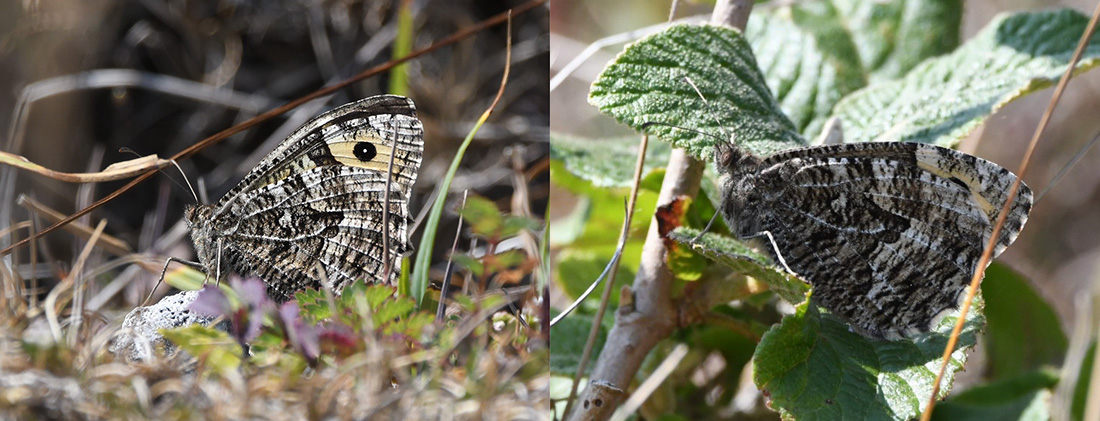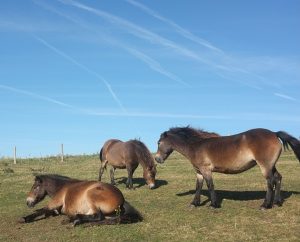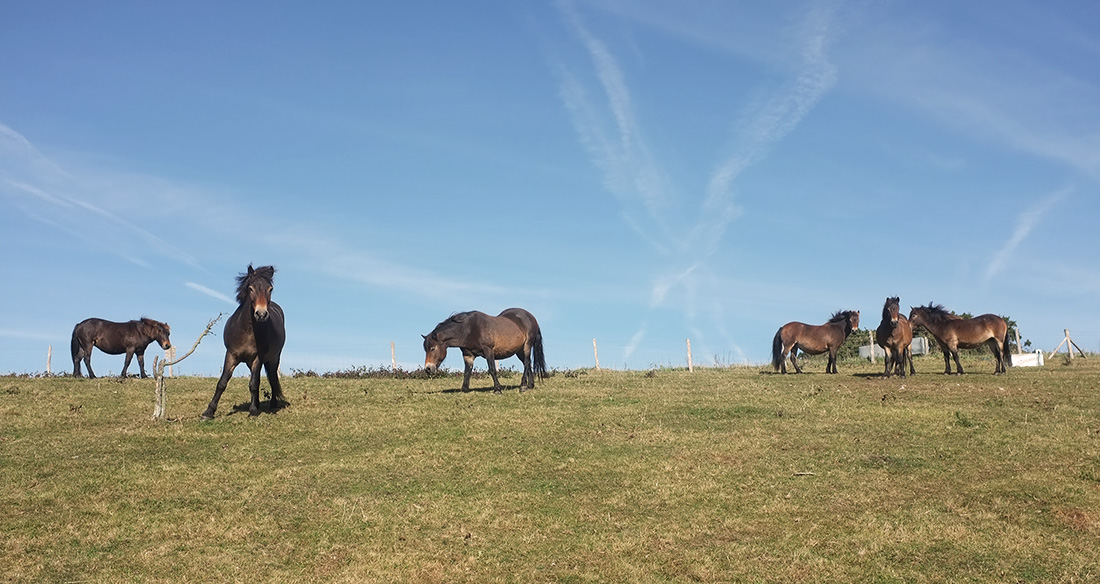Grayling butterfly, Master of Diguise
October 15, 2018
Once common on our hills, the ‘chalk race’ of grayling butterfly is now just hanging on in one small site in the South Downs. National Park Ranger Tim Squire tells us how ponies are lending a ‘helping hoof’ to bring the species back.
The grayling butterfly is fantastic at hiding. It is perhaps the best camouflaged of all our butterflies. It always lands with its wings closed and the cryptic pattern of the underside makes it disappear as soon as it lands. It will however sometimes give a flash of a black eye spot on an orange background, perhaps a tactic to warn off predators. The grayling is a butterfly of acid heathland and is widespread but declining in the UK.
There are no longer any grayling on our heaths in the South Downs, the last being lost from West Sussex in the 1980s. It does however hang on in one secluded valley called Deep Dean near Wilmington. This is considered the last remaining population of the “chalk race” of grayling. The chalk race of grayling was once common along the whole of the chalk ridge of the South Downs but disappeared over the course of the twentieth century. It once thrived on the short, sheep-bitten and rabbit grazed, hot, south facing slopes of the South Downs but large scale destruction of the downland habitat, subsequent lack of grazing management and the introduced rabbit disease myxomatosis has caused the butterfly to disappear across the rest of the National Park. The plight of this enigmatic butterfly is very serious. A concerted effort from Butterfly Conservation volunteers this summer has discovered that the last remaining population is in a very precarious situation with very low numbers seen flying. Maximum day counts of individual butterflies were in the low twenties. The site has been assessed and two of the problems identified are lack of chalk scree, which is created by rabbit activity, and an invasion of the tussock-forming, coarse tor grass which is a problem on many chalk grassland sites.
The plight of this enigmatic butterfly is very serious. A concerted effort from Butterfly Conservation volunteers this summer has discovered that the last remaining population is in a very precarious situation with very low numbers seen flying. Maximum day counts of individual butterflies were in the low twenties. The site has been assessed and two of the problems identified are lack of chalk scree, which is created by rabbit activity, and an invasion of the tussock-forming, coarse tor grass which is a problem on many chalk grassland sites.
 Urgent action is required. The sheep that have been grazing the site for a number of years are great at keeping the chalk grassland down to a nice short turf but they won’t touch the tor grass. It is clearly not very tasty to the sheep and too tough for them to chew. However help is at hand in the shape of fifteen Exmoor Ponies provided by the Sussex Pony Grazing and Conservation Trust. These ponies love tor grass and have already chewed most of it off. The Volunteer Ranger Service will also be on site later this winter to manually remove some of the small wayfaring trees that are also invading the grayling’s slope. Uprooting the saplings will hopefully replicate the effect of the loose soil created by rabbit scrapes.
Urgent action is required. The sheep that have been grazing the site for a number of years are great at keeping the chalk grassland down to a nice short turf but they won’t touch the tor grass. It is clearly not very tasty to the sheep and too tough for them to chew. However help is at hand in the shape of fifteen Exmoor Ponies provided by the Sussex Pony Grazing and Conservation Trust. These ponies love tor grass and have already chewed most of it off. The Volunteer Ranger Service will also be on site later this winter to manually remove some of the small wayfaring trees that are also invading the grayling’s slope. Uprooting the saplings will hopefully replicate the effect of the loose soil created by rabbit scrapes.
Butterfly Conservation will monitor the numbers again next year and hopefully we can see an improvement in the fortunes of the poor grayling. They have also submitted a funding bid for a project to protect grayling which will seek to create suitable habitat nearby that hopefully the grayling can colonise. It is clear that a single population is very vulnerable to extinction so having more than one site where the butterfly can live will be a first step in preserving the species. However much higher numbers will be required on the site at Deep Dean if there is any hope of it spreading to nearby sites. But we have done similar before with the Duke of Burgundy butterfly so with a concerted effort perhaps we can save this incredible and unique inhabitant of the South Downs too.

